What are the Small Light Brown Bugs in My House?
- person Gary Tramer
- calendar_today
- comment 0 comments

Discovering that itty-bitty brown bugs have taken up residence in your home without your knowledge is never fun. The only tiny roommates who never pay and eat all our food that we want around us are our children.
Small light brown bugs in the house might be relatively harmless, or they could be quite dangerous. Here are a few of the most common brown bugs you might find around the house.
Drugstore Beetles
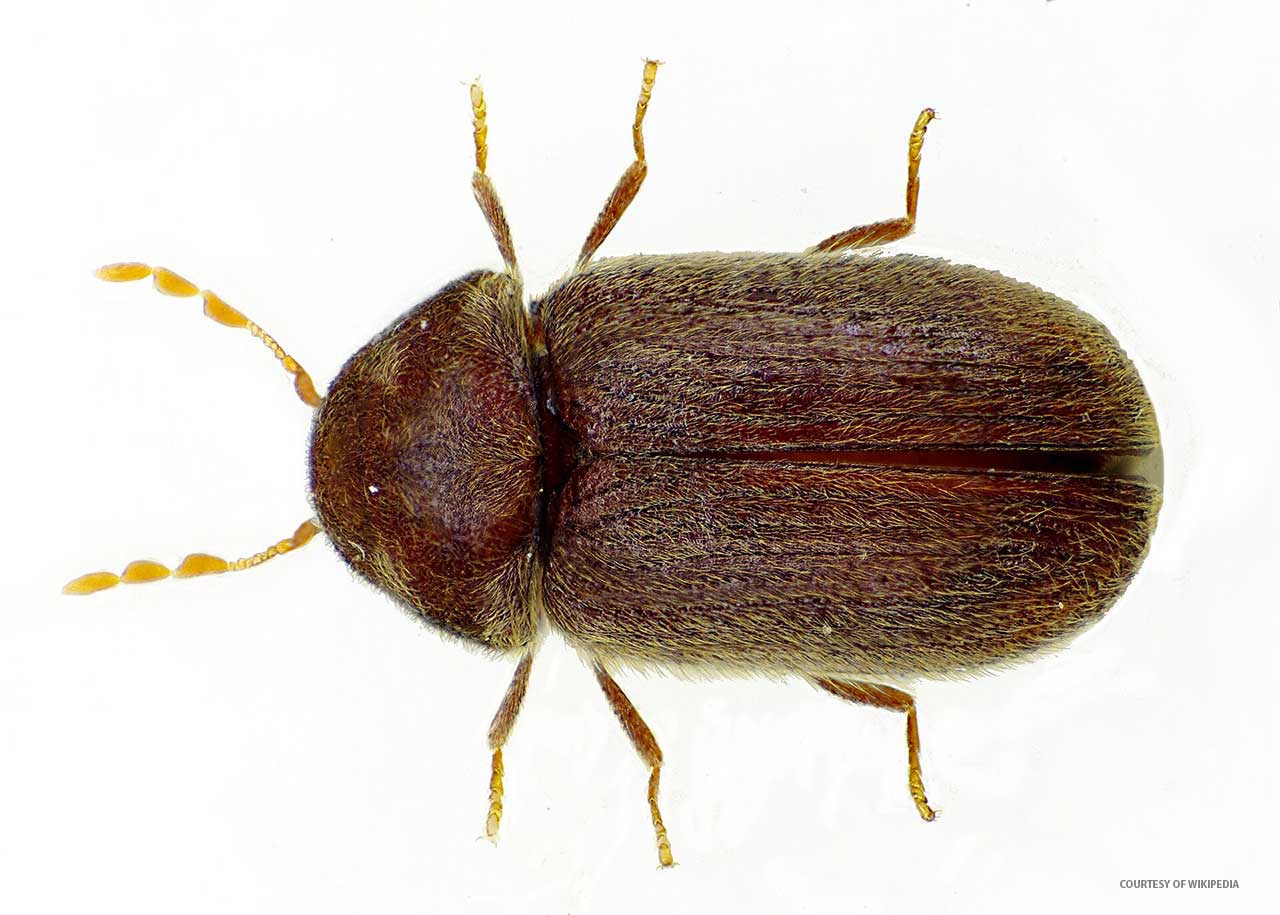
This kind of bug goes by many names. Some may refer to them as drugstore beetles, while others might know them as “bread beetles.” Others still might refer to them by the deceptively cute name “biscuit beetles.” Although some of their names are endearing, don't be fooled. These are still annoying pests.
It earns all of its names by being a common fixture among certain products. If anything is packaged and stored, chances are that this bug will want to make a meal of it. This commonly includes foods and grains, but it can also include medications and prescriptions, which explains the “drugstore” part of its moniker.
Drugstore beetles can make their way into your home through a few different means. First, they might just be attracted to the light coming from your house and decide to move right in.
Much more unsettling; however, it's a possibility for these bugs to get into your house through flour, grains, or another dry food item you get from the store. They can also be found in dry animal food.
One way to figure out whether or not you're dealing with a bread beetle infestation is to identify where you're finding most of them. With some exceptions, these insects prefer to hang out around our kitchens and pantries since that is where most of their food resides. That being said, it's possible for them to hang out anywhere around the house, especially considering that they can go for several weeks without eating.
What Do Drugstore Beetles Look Like?
Since they're on our list of small brown bugs, it should come as no surprise that drugstore beetles are, in fact, small and brown.
This species of bug is reddish brown, and they have wings that make them quite adept flyers. They are tiny, at up to roughly three and a half millimeters in length, which allows them to hide in food products easily.
How to Get Rid of Drugstore Beetles
Their ability to eat nearly anything makes drugstore beetles upsettingly adept at surviving, even in otherwise inhospitable environments. All they need is shelter, and chances are that they can find something to eat. As a result, the best way to avoid these insects taking over is to store and package all of your goods tightly so that they can't get to them.
To keep drugstore beetles away, be mindful of how you store dry goods in particular. These little pests love to feast on pantry items, so seal food in airtight containers so they have nothing to eat. Check your pantry occasionally to catch early signs of an invasion. It's a double win: you keep the human food safe and deny these beetles dinner.
If you find drugstore beetles among certain grocery products in your home, you should dispose of anything that you know they are in. Even if you don't see any more beetles, there could still be larvae or eggs waiting to hatch.
Not only should you throw them out immediately, but you should take out the trash so that it's no longer in or too close to your home. It doesn't do much good to get rid of the pests by just moving them a few feet away.
You can get rid of biscuit beetles by either heating or freezing the infested items. If you want to heat it up, go for 140 degrees Fahrenheit for between two to three hours. If freezing is more your style, put the product in the freezer at under 20 degrees Fahrenheit for two days.
Depending on how far the infestation has progressed, there will likely be some food products that have gone un-beetled. Once you identify those, store the items in a tightly locked glass or plastic container so that nothing can get in or out.
The good news is that these insects are not harmful, and therefore don't pose a threat to you or your family. While that is a relief, there's no doubt that these pests are still annoying and unpleasant to see around the house. And it's still a clever idea to have some bug bite patches at the ready.
Ticks
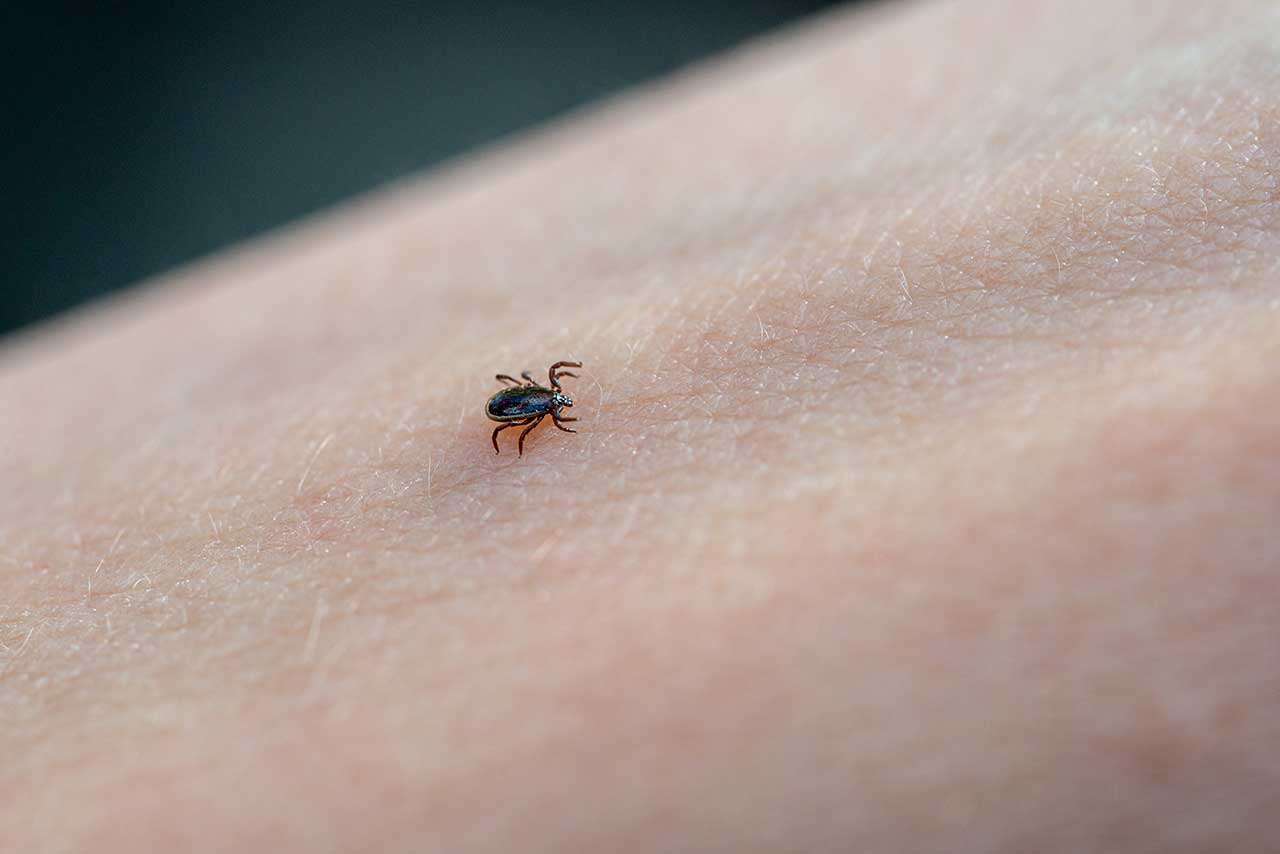
The next possible small light brown bugs in house are ticks. Many of us think of ticks as just a concern when we go for a hike or a walk somewhere with long grass, but unfortunately, these bugs can pop up all over the place. They can get into our homes by hitching a ride on us, our kids, or our pets. Ticks can enter our houses through cracks in windows, doors, and any other structural inconsistency they find.
The main reason that we tend to fear ticks is because of the diseases they are capable of carrying and transmitting. Ticks are known to be carriers of Lyme disease, Rocky Mountain Spotted Fever, tularemia, anaplasmosis, babesiosis, and ehrlichiosis, just to name a few. There are many different kinds of ticks, and certain species are more likely to transmit specific diseases when sucking your blood than others.
Lyme disease is one of the most common ailments ticks can spread, often spotted by a characteristic rash that will appear around the sight of the bite days or weeks after contact. This rash often looks like a bullseye since a visible red ring typically manifests. Lyme disease can start with a rash and then lead to fever, chills, and more serious problems like joint pain and brain fog if you ignore it.
Meanwhile, the Rocky Mountain Spotted Fever also shows itself through a rash and fever and adds headache into the mix. Don't forget about Tularemia, which can cause skin ulcers and swollen glands, or Anaplasmosis and Ehrlichiosis, which can put you down with fever, headaches, and muscle pain. And babesiosis might just make you feel like you've got the flu with fever, chills, and sweats.
If you suspect you or a loved one might be experiencing symptoms of Lyme disease or any other tick-borne illness, be sure to see a doctor as soon as possible.
Ticks should be avoided at all costs, and this can be done by being vigilant around the house and also by wearing long clothes and repellents when you're out in nature.
What Do Ticks Look Like?
A tick might look slightly different depending on their species, gender, age, and how recently they've fed. If you're dealing with an adult tick who hasn't fed lately, you can expect to see an insect that is roughly the size of an apple seed.
In their larval stage, ticks have six legs. When they're fully grown, they upgrade to eight. Many types of ticks are brown or at least have some variation of a brown color pattern.
How to Get Rid of Ticks
If you find ticks around the house, it's crucial to act fast. Eucalyptus oil is an effective and all-natural means of both killing and repelling ticks around the house. In order to prevent these bugs from getting in, in the first place, spray a diluted mixture of eucalyptus and water anywhere that ticks could potentially enter your home (window sills, doorways, etc.).
In the event that you discover a tick has already bitten you or a loved one, do not panic. The process of removing the tick isn't too complicated and can be performed at home. Get a clean pair of tweezers, and latch onto the tick as close to the skin as possible. Then, just pull up until the tick detaches.
Using steady pressure and not twisting will give you the best chance at the tick coming out all in one piece. After that, thoroughly clean the bite area with soap and warm water or with disinfecting rubbing alcohol. You can get rid of the offending tick for good by flushing it down the toilet.
You also have the option to get the tick tested for various diseases. To do this, tightly seal the tick in a sandwich bag, and send it to your preferred testing site.
Cockroaches
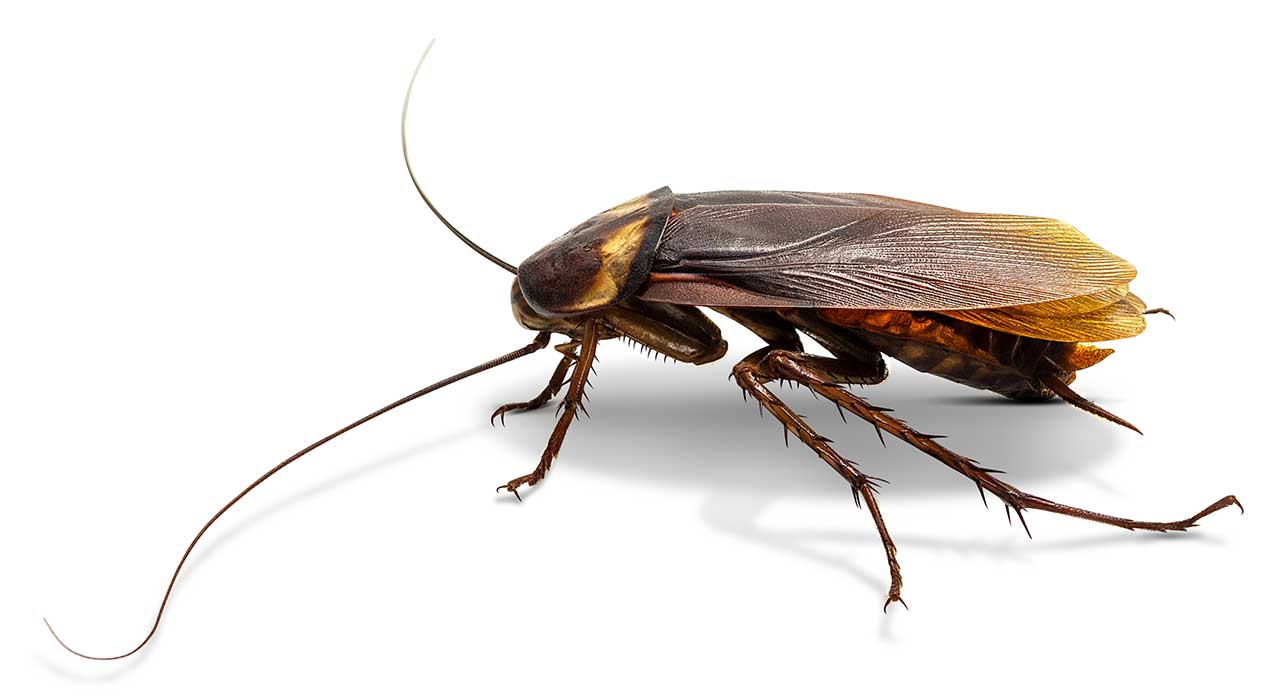
We all love to hate cockroaches, and it's not hard to understand why.
Cockroaches are unhygienic and can carry all sorts of allergens and bacteria. Unlike insects like ticks, mosquitoes, and bed bugs, cockroaches don't feed on us. That is possibly their only saving grace.
What Do Cockroaches Look Like?
Cockroaches look like the last remnants of a prehistoric era that we really wish had stayed prehistoric. Their sturdy exoskeletons as well as their ability to eat almost everything, makes them notoriously good at surviving.
On average, cockroaches range from about one to one and a half inches in length, but this can vary depending on their species and other factors. They are a red-brown color, have spindly legs, and have long antennae at the end of their heads.
How to Get Rid of Cockroaches
This is true of all insects and insect infestations, but the best way to keep them at bay is to never let them into your house. This is almost always easier said than done.
Cockroaches are adept at crawling into minuscule cracks and tiny holes. They can even hitchhike on backpacks or luggage — not to mention travel via pipes connecting apartment units.
For those of us who don't want to turn to harsh chemicals to get rid of these bugs, we can instead utilize the many powers of essential oils.
Cockroaches hate both cedarwood oil and peppermint oil, which most people find to smell quite delightful. This means that spraying a diluted mixture of either (or both) oils around your home can benefit you in multiple ways.
To make these oils work overtime, mix a few drops of either oil (or a combo if you're feeling daring) with water in a spray bottle. Then, think about where a cockroach will hide and target those places. It could mean spraying around baseboards, in cracks and crevices, near drain entrances, and any other nooks and crannies where they might enter or hide.
Reapply the mixture to keep the scent strong and the roaches far from you. For extra defense, soak cotton balls in the oil mixture and tuck them into trouble spots.
First, cockroaches will be deterred from entering your home. Second, the space will smell nice, which we all know is a luxury when kids are around.
Weevils
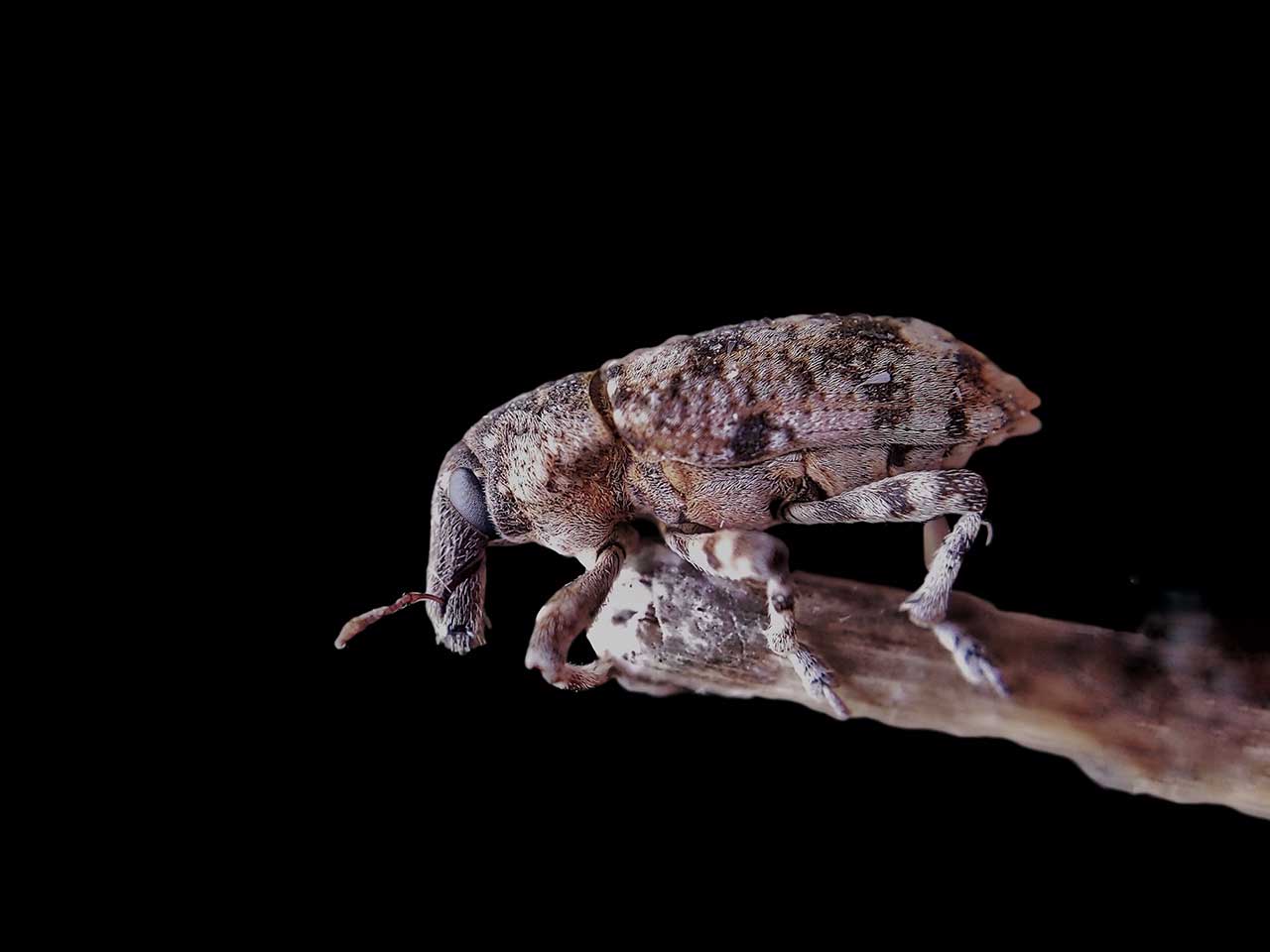
Another annoying potential small light brown bugs in house you might encounter are weevils. Weevils aren't harmful to people or pets, but they are unsightly when you find them around the house. These insects are most commonly found in the kitchen and pantry, infesting rice, grains, nuts, and more.
Weevils get more active and likely to invade during the warmer months. That's when they're on the lookout for places to settle down and start their families—your pantry being high on their list.
As the temperature rises, so does the chance of a weevil invasion. A little seasonal preparation can go a long way. Give your pantry a thorough audit before summer. Move flour, rice, grains, and any other weevil favorites into airtight containers. These pests are tiny, but their appetite for dry goods is anything but, and sealing up their food sources can put a stop to them.
Also, make it a habit to inspect your groceries before they make it into the pantry, especially bulk items that can act as a Trojan horse for weevil stowaways.
What Do Weevils Look Like?
An adult weevil is mostly brown, but they have spots on their back that can range from yellow to red. Weevils are among the smallest bugs on our list, at only a quarter of an inch long. Their mini stature makes them great at hiding in food and in cabinets.
How to Get Rid of Weevils
To get rid of weevils, you will first need to dispose of any infected food. Even if the weevils came in on just one food product, they can easily move and migrate to other foods that aren't well contained. After all of the offending products are gone, it's time to thoroughly clean the area.
Any shelves should be wiped down with soap and hot water, and can then be treated with white vinegar. You can vacuum the shelves to make sure any weevil remnants are picked up.
Silverfish
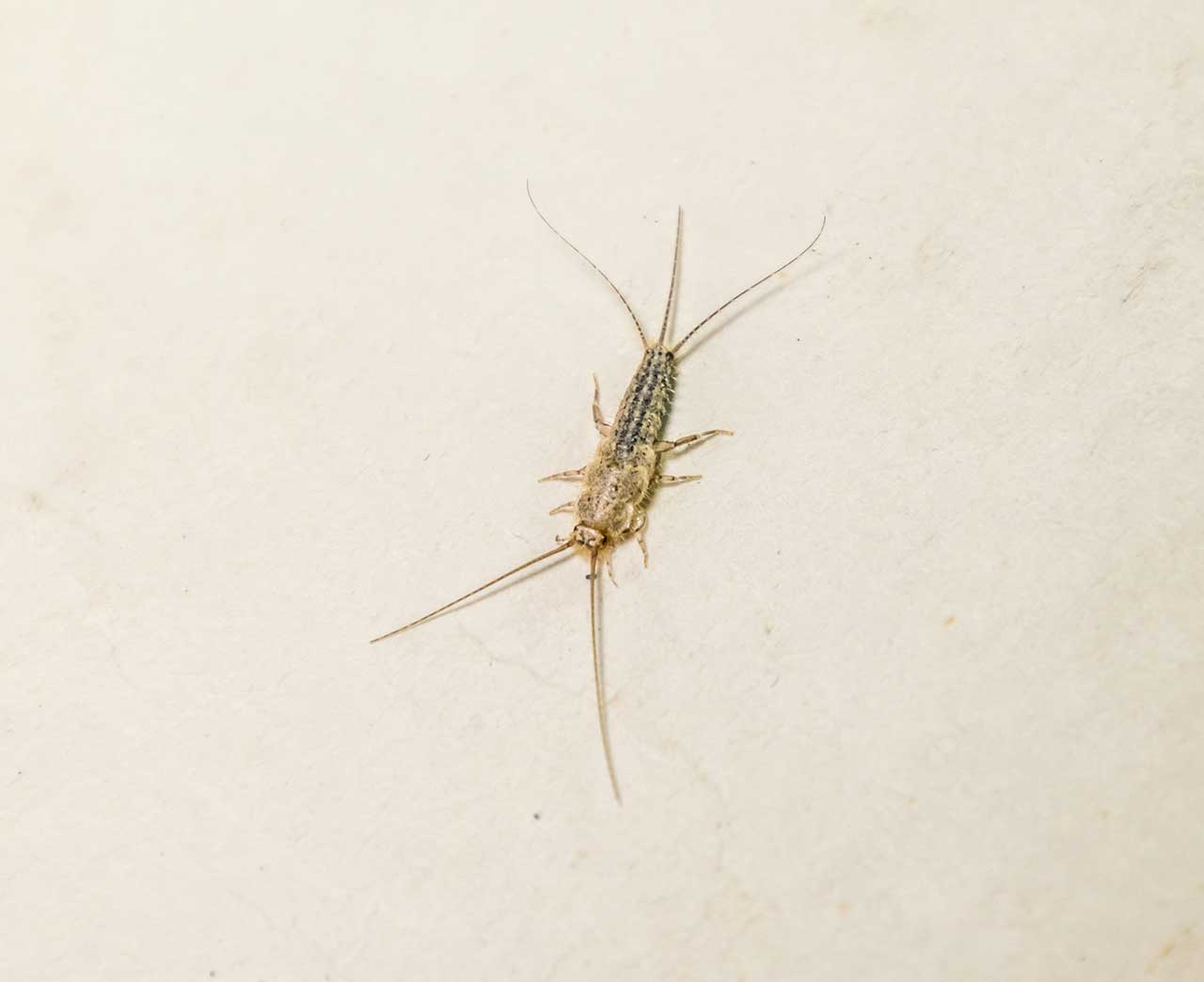
These insects are known to eat paper, wallpaper, and any carbohydrates they can get their grubby little arms on. So, unless you want your wallpaper to become silverfish food, it's best to remove these insects quickly.
What Do Silverfish Look Like?
Silverfish are wingless, slender, and can be silver or brown looking. They have three long appendages on the back of their body that really set them apart from other bugs.
How to Get Rid of Silverfish
To get rid of silverfish, first, get rid of anything that the silverfish have infested. Next, tightly seal any carbohydrates or papers that they could use as their food.
Finally, use cedarwood oil to keep them from returning. You can try cedar shavings, cloves, or cinnamon.
Silverfish FAQ
Are silverfish harmful to humans?
Silverfish aren't directly harmful to humans because they don't bite or carry diseases. But that doesn't make them totally harmless. They can be a house nuisance that damages books, documents, wallpaper, clothes, and other starchy items they can feast upon.
How can I tell if I have silverfish?
Look for tiny, irregular holes in fabrics or paper, yellowish stains on various items around the house, or their tiny pepper-like feces. They usually come out at night, so you likely won't catch them running around in the daytime. It's possible, although unlikely.
Why are silverfish in my house?
Silverfish thrive in damp, dark areas. If your house is very humid or has leaky pipes, or unventilated spaces, it could be inviting to them.
How do I keep silverfish out?
Get a dehumidifier, fix leaks, and ventilate your house, including rooms you might not use as often, like basements and attics. Seal cracks and crevices around doors and windows where they could crawl into the house.
When to Seek Professional Pest Control
It's time to call in the professionals:
- If you're finding small light brown bugs in house rather than in isolated areas, it might be too big for DIY methods to handle effectively.
- If you've tried various at-home remedies and nothing worked, continuing to battle the infestation on your own might only make it worse.
- When pests begin to cause serious damage to the house, professional extermination means less money and valuables gone in vain.
- If pests are in areas where DIY treatments could be risky, such as around electrical systems or within structural elements, professionals have the tools to do it safer.
Before the exterminator arrives, do a bit of tidying up to give them clear access to areas where pests have been active. You don't need to go overboard, but removing clutter can help them do their job better.
What to Do About a Bug Bite
If any bug does give you or your family members an itchy bite, use the MagicPatch Itch Relief Patches to feel better. Without any harsh chemicals, these stickers' innovative Grid-Relief Technology makes them super effective at curbing the itch.
FAQs
What are little brown bugs that look like seeds?
Those small light brown bugs in house could be a few different critters, but one common suspect is the carpet beetle. They're tiny, round, brown, and love to chew on fabrics. They're pretty undesirable roommates since they can damage clothes, furniture, and carpets, which is where their name comes from.
What can be mistaken for bed bugs?
Many bug types get mixed up with bed bugs because they share some looks or habits. Carpet beetles, for example, often get mistaken for bed bugs. They're small and can be found in bedrooms, but they're more interested in your wool sweaters than in your wood furniture or body. Fleas and spider beetles also sometimes get this mistaken identity. So, have some essential oil for fleas at the ready, too.
What are these tiny brown bugs in my bed?
If tiny brown bugs are appearing in your bed, there's a chance they might be bed bugs. These little vampires are about the size of an apple seed, brown, and they usually hang out in mattresses and other similar spots to be close to their next meal — unfortunately, that's you. They leave behind itchy bites and can be quite a hassle to eradicate. Other bugs, like drugstore beetles, could also be a suspect. It's a great idea to have an itch patch handy if you're dealing with a bug infestation, but you should also contact an exterminator promptly.
What is a light brown bug that looks like a cockroach?
A bug like this could be a German cockroach. They're among the smaller cockroach species, light brown, and can look quite similar to other roach types. They might be smaller, but are still unwelcome kitchen guests, as they're known for being a health hazard and can multiply quickly.

